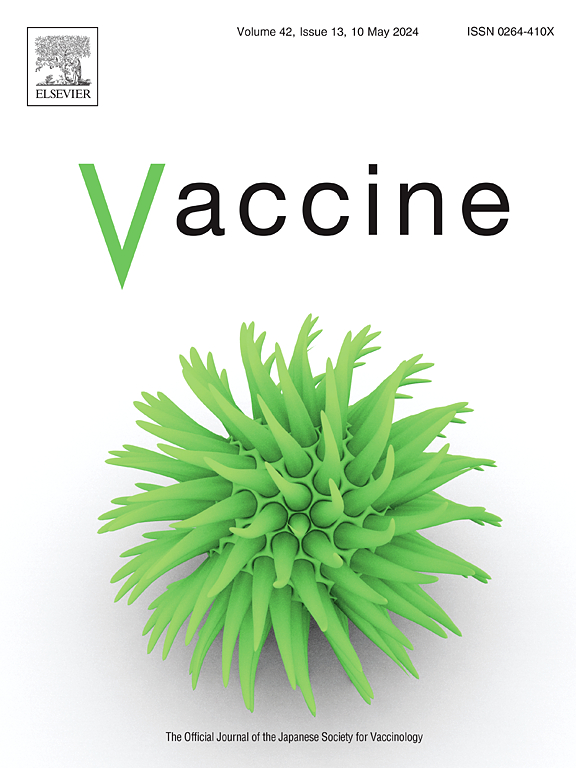Non-typhoidal Salmonella combination vaccines: clinical development plan and regulatory considerations
IF 4.5
3区 医学
Q2 IMMUNOLOGY
引用次数: 0
Abstract
Invasive non-typhoidal serovars of Salmonella enterica, S. Typhimurium and S. Enteritidis, (iNTS) are estimated to cause over 500,000 cases of disease leading to more than 79,000 deaths with a high case fatality ratio of 14.5 %. Most infections occur in infants and young children in LMICs in sub–Saharan Africa where host risk factors for iNTS disease such as malaria, malnutrition, HIV infection, and anemia are common. iNTS disease is observed from birth, with a peak incidence early in the second year of life, declining before the age of 3 years. The prevalence of multiple drug resistance of iNTS has increased markedly by decade, emphasizing the need for effective vaccines.
A clinical development plan and regulatory pathway for licensure of iNTS vaccines has been shaped following the development of Preferred Product Characteristics and R&D Roadmap through a series of expert consultations. Several iNTS alone or combined with Typhoid Conjugate Vaccine platforms are in early clinical development. Encouraging safety and immunogenicity data have prompted developers and manufacturers to plan efficacy trials, aligned with regulatory expectations. It is critical to clearly communicate iNTS disease burden in endemic countries and to discuss complexities related to iNTS single component or combination vaccine clinical development with regulators. An essential component is the disease burden in infants less than 6 months of age, which will inform the optimal age of first vaccination (less than or from 6 months), compatibility across national expanded programme on immunization schedules, and whether a booster dose would be needed. Early regulatory guidance is essential to make informed regulatory decisions and to guide the clinical development plan and licensure pathway. Continued communication with public health stakeholders and end-user representatives will effectively contribute to better awareness and education about iNTS disease and protection afforded by vaccination.
非伤寒沙门氏菌联合疫苗:临床开发计划和监管考虑
据估计,肠沙门氏菌、鼠伤寒沙门氏菌和肠炎沙门氏菌(iNTS)的侵袭性非伤寒血清型造成50多万例疾病,导致7.9万多人死亡,病死率高达14.5%。大多数感染发生在撒哈拉以南非洲的低收入和中等收入国家的婴儿和幼儿中,在那里,iNTS疾病的宿主风险因素如疟疾、营养不良、艾滋病毒感染和贫血很常见。iNTS疾病从出生开始就可以观察到,在生命的第二年早期发病率达到高峰,在3岁之前下降。十年来,iNTS的多重耐药率显著增加,强调需要有效的疫苗。通过一系列专家咨询,制定了首选产品特性和研发路线图,形成了iNTS疫苗许可的临床开发计划和监管途径。几种iNTS单独使用或与伤寒结合疫苗联合使用的平台正处于早期临床开发阶段。令人鼓舞的安全性和免疫原性数据促使开发人员和制造商计划与监管期望一致的疗效试验。至关重要的是要清楚地通报流行国家的iNTS疾病负担,并与监管机构讨论与iNTS单组分或联合疫苗临床开发相关的复杂性。一个重要组成部分是6个月以下婴儿的疾病负担,这将为首次接种疫苗的最佳年龄(小于或大于6个月)、全国扩大免疫计划的兼容性以及是否需要加强剂量提供信息。早期监管指导对于做出明智的监管决策以及指导临床开发计划和许可途径至关重要。继续与公共卫生利益攸关方和最终用户代表进行沟通,将有效地促进更好地认识和教育国民感染综合征以及疫苗接种所提供的保护。
本文章由计算机程序翻译,如有差异,请以英文原文为准。
求助全文
约1分钟内获得全文
求助全文
来源期刊

Vaccine
医学-免疫学
CiteScore
8.70
自引率
5.50%
发文量
992
审稿时长
131 days
期刊介绍:
Vaccine is unique in publishing the highest quality science across all disciplines relevant to the field of vaccinology - all original article submissions across basic and clinical research, vaccine manufacturing, history, public policy, behavioral science and ethics, social sciences, safety, and many other related areas are welcomed. The submission categories as given in the Guide for Authors indicate where we receive the most papers. Papers outside these major areas are also welcome and authors are encouraged to contact us with specific questions.
 求助内容:
求助内容: 应助结果提醒方式:
应助结果提醒方式:


